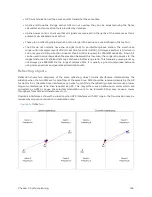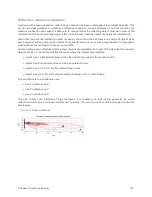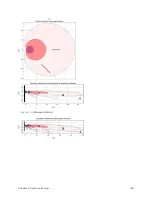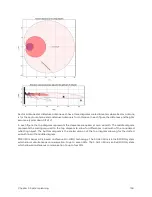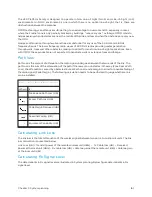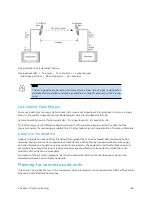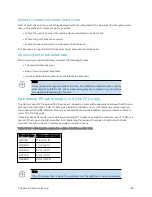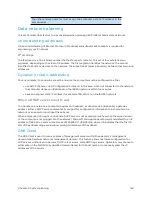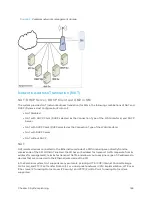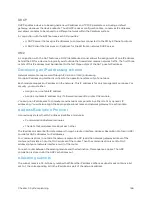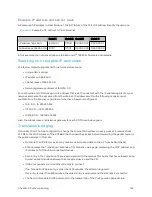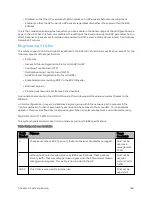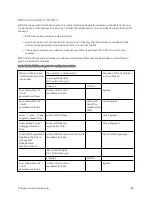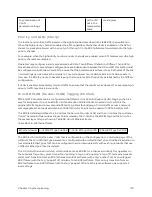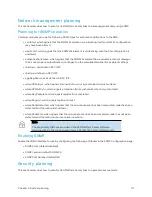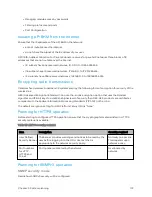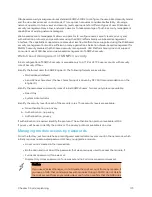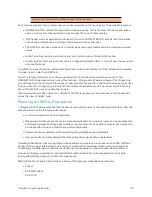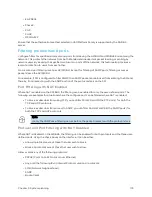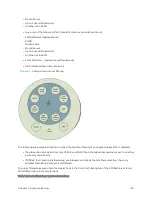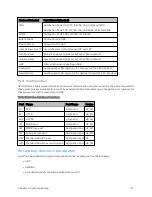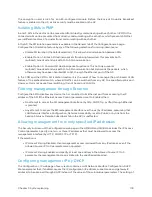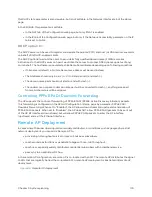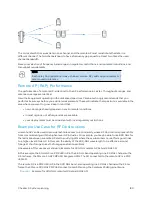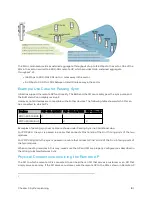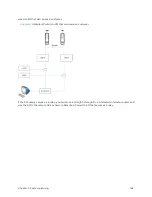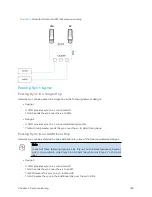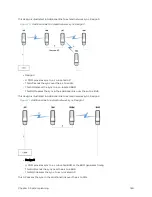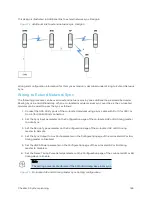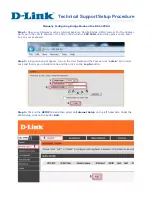
Chapter 3: System planning
170
any combination of
VLAN
parameter settings
with a VID
not in the
membership
table
Local Egress
Priorit y on VLANs ( 80 2.1p)
The radios can prioritize traffic based on the eight priorities described in the IEEE 802.1p specification.
When the high-priority channel is enabled on a SM, regardless of whether VLAN is enabled on the AP for
the sector, packets received with a priority of 4 through 7 in the 802.1p field are forwarded onto the high-
priority channel.
For example, when the high priority and low priority channels are enabled on an SM, medium and ultra high
priority channels are disabled.
Operators may configure priority precedence as 802.1p Then Diffserv (Default) or Diffserv Then 802.1p.
Since these priority precedence configurations are independent between the AP and SM, this setting must
be configured on both the AP and SM to ensure that the precedence is adhered to by both sides of the link.
VLAN settings can also cause the module to convert received non-VLAN packets into VLAN packets. In
this case, the 802.1p priority in packets leaving the module is set to the priority established by the DiffServ
configuration.
If VLAN is enabled, immediately monitor traffic to ensure that the results are as desired. For example, high-
priority traffic may block low-priority.
Q - in- Q DVLAN ( Double- VLAN) Tagging ( 80 2.1ad)
PMP and PTP modules can be configured with 802.1ad Q-in-Q DVLAN (Double-VLAN) tagging which is a
way for an operator to put an 802.1Q VLAN inside of an 802.1ad VLAN. A nested VLAN, which is the
original 802.1Q tag and a new second 802.1ad tag, allows for bridging of VLAN traffic across a network
and segregates the broadcast domains of 802.1Q VLANs. Q-in-Q can be used with PPPoE and/or NAT.
The 802.1ad standard defines the S-VLAN as the Service Provider VLAN and the C-VLAN as the customer
VLAN. The radio software does 2-layer Q-in-Q whereby the C-VLAN is the 802.1Q tag and the S-VLAN is
the second layer Q tag as shown in Table 96 Q-in-Q Ethernet frame.
Table 96 Q-in-Q Ethernet frame
Ethernet Header
S-VLAN EthType 0x88a8
C-VLAN EthType 0x8100
IP Data EthType 0x0800
The 802.1ad S-VLAN is the outer VLAN that is configurable on the Configuration > VLAN web page of the
AP/BHM. The Q-in-Q EtherType parameter is configured with a default EtherType of 0x88a8 in addition to
four alternate EtherTypes that can be configured to aid in interoperability with existing networks that use
a different EtherType than the default.
The C-VLAN is the inner VLAN tag, which is the same as 802.1Q. As a top-level concept, this operates on
the outermost tag at any given time, either “pushing” a tag on or “popping” a tag off. This means packets
will at most transition from an 802.1Q frame to an 801.ad frame (with a tag “pushed” on) or an untagged
802.1 frame (with the tag “popped” off. Similarly, for an 802.1ad frame, this can only transition from an
802.1ad frame to an 802.1Q frame (with the tag “popped” off) since the radio software only supports 2
levels of tags.
Summary of Contents for PMP 450 Series
Page 92: ...Chapter 2 System hardware 92 Figure 29 MicroPoP Omni antenna implementation pattern Vertical...
Page 134: ...Chapter 3 System planning 134 Figure 51 Mast or tower installation...
Page 135: ...Chapter 3 System planning 135 Figure 52 Wall installation...
Page 136: ...Chapter 3 System planning 136 Figure 53 Roof installation...
Page 137: ...Chapter 3 System planning 137 Figure 54 GPS receiver wall installation...
Page 158: ...Chapter 3 System planning 158 Figure 61 cnMedusa Antenna...

